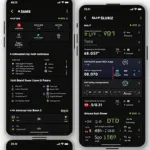If your Subaru’s OBD2 scanner shows a “catalyst not ready” status, you might be wondering what it means and how to fix it. This article provides a comprehensive guide to understanding the Subaru OBD2 catalyst not ready condition, its causes, and solutions. We’ll cover everything from the basics of the catalytic converter to advanced diagnostics and troubleshooting tips.
What Does “Catalyst Not Ready” Mean on a Subaru OBD2 Scanner?
The “catalyst not ready” status indicates that your Subaru’s onboard diagnostics system hasn’t yet completed the necessary tests to determine if the catalytic converter is functioning correctly. This doesn’t necessarily mean your catalytic converter is faulty, but rather that the system needs more driving cycles to gather enough data. The OBD2 system monitors various parameters related to the catalytic converter’s performance, including oxygen sensor readings and exhaust gas temperatures.
After a certain number of drive cycles, if the system still reports “catalyst not ready”, it suggests a potential problem with the catalytic converter, oxygen sensors, or other related components. Understanding how this system works is crucial to resolving the issue. The “catalyst not ready” status can prevent you from passing emissions tests, so it’s essential to address it promptly. Don’t panic, however; this is a common issue, and often, the solution is relatively simple.
You can find more information about Subaru OBD2 systems on our obd2 subaru page.
Why is My Subaru’s Catalyst Not Ready?
Several factors can contribute to a “catalyst not ready” status:
- Recent Battery Disconnection or ECU Reset: Disconnecting the battery or resetting the engine control unit (ECU) erases stored diagnostic data, including the catalyst monitor status.
- Insufficient Drive Cycles: The OBD2 system requires a specific number of drive cycles with varying driving conditions to complete the catalyst monitor tests.
- Faulty Oxygen Sensors: The oxygen sensors play a vital role in monitoring the catalytic converter’s efficiency. Malfunctioning sensors can prevent the system from completing the tests.
- Damaged Catalytic Converter: A damaged or failing catalytic converter will not function correctly, leading to a “catalyst not ready” status.
- Exhaust Leaks: Leaks in the exhaust system can disrupt the exhaust flow and affect the accuracy of oxygen sensor readings, hindering the catalyst monitor tests.
- Other Issues: Problems with the fuel system, ignition system, or other engine components can indirectly affect the catalytic converter and cause a “not ready” status.
How to Fix a Subaru OBD2 Catalyst Not Ready Status
The first step is to determine the underlying cause. If the battery was recently disconnected or the ECU reset, simply driving the vehicle through several complete drive cycles should resolve the issue. A complete drive cycle involves a cold start, a period of driving at varying speeds and loads, and a cool-down period.
If the problem persists, further diagnosis is necessary. Check for any trouble codes stored in the OBD2 system. These codes can provide valuable clues about the cause of the problem. Inspect the oxygen sensors for damage or malfunction. Consider checking for exhaust leaks.
Addressing these underlying issues, such as replacing faulty oxygen sensors or repairing exhaust leaks, will usually resolve the “catalyst not ready” condition. You can find more information about specific Subaru P0420 codes on our obd2 codes p0420 subaru page.
How Many Drive Cycles are Needed for Subaru Catalyst Ready?
The number of drive cycles required can vary depending on the specific Subaru model and year. Generally, it takes between 5 and 10 complete drive cycles for the system to complete the catalyst monitor tests. A complete drive cycle typically involves a specific sequence of driving conditions, including a cold start, a period of highway driving, and city driving.
What if the Problem Persists?
If the “catalyst not ready” status persists after several drive cycles and troubleshooting efforts, it’s best to consult a qualified Subaru mechanic. They have the expertise and diagnostic tools to pinpoint the exact cause and recommend the appropriate repairs. Ignoring a persistent “catalyst not ready” condition can lead to more severe problems down the line.
Conclusion
The “subaru obd2 catalyst not ready” status can be a frustrating issue, but understanding its causes and following the appropriate diagnostic steps can help you resolve it quickly and efficiently. Remember to check for trouble codes, inspect oxygen sensors, and ensure complete drive cycles. If the problem persists, seek professional help.
FAQ
- What is a catalytic converter? A catalytic converter is a device in the exhaust system that reduces harmful emissions.
- Can I drive with a “catalyst not ready” status? Yes, but you may fail emissions tests.
- How long does a catalytic converter last? Typically, 100,000 miles or more.
- What are the symptoms of a bad catalytic converter? Reduced engine performance, rattling noise from the exhaust, and a sulfur smell.
- How much does it cost to replace a catalytic converter? The cost varies depending on the vehicle and the type of converter.
- Can I reset the OBD2 system myself? Yes, by disconnecting the battery or using an OBD2 scanner.
- What are the common OBD2 codes related to catalytic converters? P0420, P0430, and others.
Common Scenarios
- Scenario 1: Recently replaced the battery. Solution: Drive through several complete drive cycles.
- Scenario 2: Check engine light is on. Solution: Retrieve the OBD2 codes and address the underlying issue.
- Scenario 3: Poor fuel economy. Solution: Check for other issues besides the catalytic converter, such as faulty oxygen sensors.
Further Reading
For more information on OBD2 systems and troubleshooting, check out our other helpful articles on our website.
Need further assistance? Contact us via WhatsApp: +1(641)206-8880, or Email: [email protected]. Our 24/7 customer support team is ready to help.


